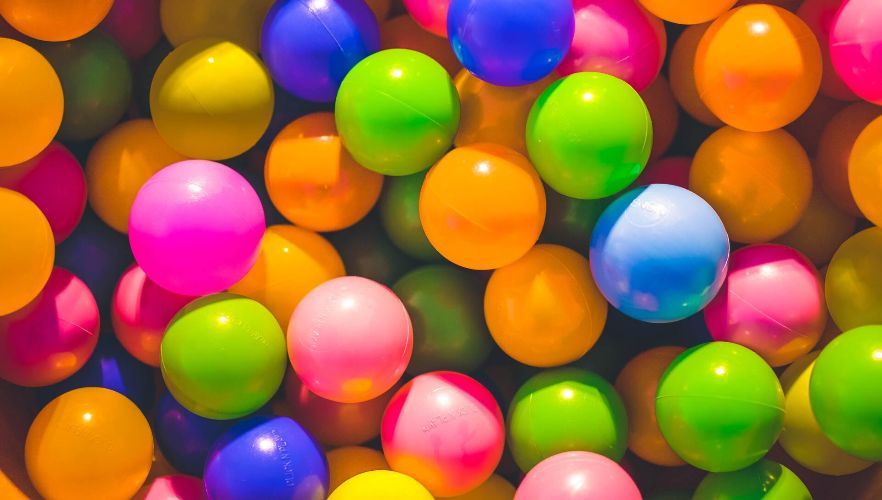What’s Hot and What’s Not in Web Design Colors
What’s Hot and What’s Not in Web Design Colors
Designers have been experimenting with colors for years and have come up with hundreds of different palettes to suit every design need. While most of these color combinations seem random, some have emerged as the perfect solution for a wide variety of visual problems. How do you incorporate so many colors without it seeming overwhelming?
Today we’ll look at some examples of successful use of colors in web design, explore the psychology behind hues, and find out what not to do when designing with colors. Keep reading to learn more.
What are some successful uses of color in web design?
First, let’s take a look at some examples of how certain colors have been used to create distinct and interesting designs. The following examples will help you see how certain color combinations can work in the real world, both in print and online. You can also read how the right color can make a website more enticing and memorable.
Let’s begin our tour of successful color usage by looking at what Pantone called The Year of the Color Orange. Orange is an incredibly versatile color, and it’s great for expressing warmth and encouraging connections. When used effectively, orange can be a great option for any design situation. Orange’s reputation as a bold and powerful color makes it an excellent choice for use on logos and other large pieces of branding. Orange is also a great option for color-coding and unifying different types of content, such as in a blog layout.
Over the past year, orange has become a popular choice for blogs, and web designers all over the world have been experimenting with it. As a result, many orange blog designs have been created, meaning orange is a successful color for blogs.
Psychology of Color in Web Design
Color is a powerful tool, and understanding how it works and how to use it effectively can help your designs communicate more effectively. Color can communicate a variety of different meanings based on the psychology of the viewer. You can use this to your advantage by knowing how certain colors can affect your audience. For example, the color red often triggers feelings of anger and impatience in people, while green is often associated with relaxation.
Blue, on the other hand, is often seen as trustworthy, calm, and safe. You can use this to your advantage to create designs that are more engaging, memorable, and even emotional. Cybercriminals use psychology to trick people into downloading malware. For example, a red text on a black background seems like it should be making a request for user input. But in reality, it’s just trying to get you to download something unwanted.
Don’t use saturated colors in web design
Saturated colors are vivid hues that are often associated with bold and attention-grabbing designs. Unfortunately, saturated colors are often too intense for the human eye to process well, leading to decreased readability and design clarity. You should use saturated colors for images and logos, as these mediums are better suited to displaying strong colors. However, when designing websites, make sure your colors are still readable and easy on the eyes. Saturated colors are better suited to images, as they’re easier to process and don’t affect readability in the same way as they do in web design. Saturated colors don’t affect readability in the same way as they do in web design.
Avoid black in web design
Black is often a great choice for backgrounds and other large elements on a website. However, for smaller areas like text, you should consider using a different color. Black text on a white background is extremely hard to read, leading to a much lower readability rate than other colors. Black text on a non-black background is basically unreadable, while grey text is neither dark enough nor light enough to be easily readable. Black text on a white background is extremely hard to read, leading to a much lower readability rate than other colors.
Black text on a non-black background is basically unreadable, while grey text is neither dark enough nor light enough to be easily readable.
Be aware of your contrast ratio while choosing colors
Contrast ratio is the difference between the amount of light reflected from a color and the amount of light absorbed. Contrast ratio is important for understanding how colors affect readability. The higher a color’s contrast ratio, the more readable it is. Contrast ratio is important for understanding how colors affect readability. The higher a color’s contrast ratio, the more readable it is. Contrast ratio is important for understanding how colors affect readability. The higher a color’s contrast ratio, the more readable it is.
Blue is a popular color for websites
Blue is a popular color for websites because it’s easy on the eyes and very easy to process. It’s also a very common color, making it an obvious choice for any website. Blue is one of the best colors for representing authoritative websites due to its clean and professional look. Blue is a great color for representing authority due to its clean and professional look. Blue is one of the best colors for representing authoritative websites due to its clean and professional look. Blue is a great color for representing authority due to its clean and professional look.
Yellow, orange and red - why they work and why they don’t
Yellow is a great color for representing warmth, fun, and a sense of curiosity. Yellow is a great color for representing warmth, fun, and a sense of curiosity. However, yellow is often associated with poor attention management, and it can be difficult for the human eye to process. Yellow is often associated with poor attention management and can be difficult for the human eye to process. Orange is a popular choice for websites due to its rich, warm color. Orange is a popular choice for websites due to its rich, warm color.
Conclusion
Color plays a crucial role in how we perceive our surroundings and how we interact with the world around us. When used well, color can create engaging and memorable visual experiences. However, it's important to understand how color affects us as humans and how it can be used to create engaging experiences for your users. Ultimately, it's all about striking a balance between creativity and usability.









